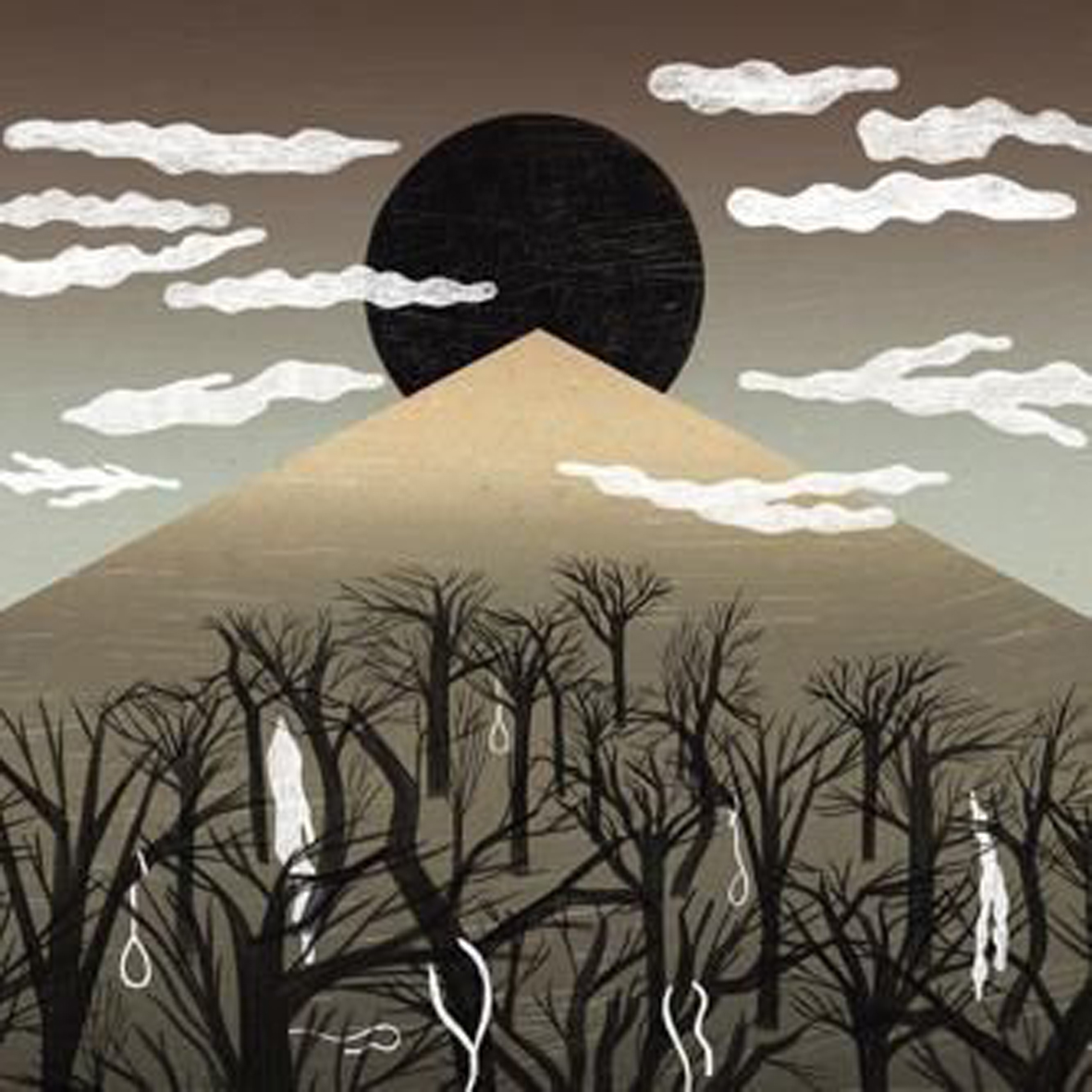 I had never heard Retribution Body before this album (which is a shame), but Aokigahara immediately got my attention for: 1.) being inspired by Japan's legendarily demon-haunted "suicide forest," and 2.) being released on the hyper-discriminating and oft-dormant Type label.  Also, it is a unique and near-great album.  Matthew Azevedo's singular drone performance/bass tone study has already drawn favorable comparisons to artists like Sunn O))) and Earth, but I actually see it much more in line with more formal electronic composers like Eliane Radigue, as it has a chiseled purity to it that feels very different than amplifier-worship (at times, anyway).  That said, Aokigahara is still quite heavy.
I had never heard Retribution Body before this album (which is a shame), but Aokigahara immediately got my attention for: 1.) being inspired by Japan's legendarily demon-haunted "suicide forest," and 2.) being released on the hyper-discriminating and oft-dormant Type label.  Also, it is a unique and near-great album.  Matthew Azevedo's singular drone performance/bass tone study has already drawn favorable comparisons to artists like Sunn O))) and Earth, but I actually see it much more in line with more formal electronic composers like Eliane Radigue, as it has a chiseled purity to it that feels very different than amplifier-worship (at times, anyway).  That said, Aokigahara is still quite heavy.
Matthew Azevedo does not have a typical "noise artist" pedigree, as he has a long career as a mastering engineer, as well as an academic background in acoustics research.  Usually I am not terribly interested in a musician's formal credentials (if not actively dismissive), but they are quite relevant in this case, as being knowledgeable about frequencies, mastering, and architectural acoustics is essential for an album devoted almost entirely to exploring the potential of oscillating bass frequencies.  Appropriately, Aokigahara is a site-specific work, as this recording was taken from a 2013 performance at Fisher Recital Hall in Lowell, MA.  Azevedo performed these two pieces using guitars, piano, and host of strategically placed microphones.  Given that origin, I suspect the album is a mere shadow of the actual performance, especially since I do not possess a stereo set-up with killer sub-woofers.  It is still quite an imposing shadow though, particularly when it sticks to just throbbing and oscillating bass tones.
The strongest parts tend to be the simplest, such as opening moments of "Sea of Trees," where Azevedo’s deep bass amorphously throbs, pulses, and plunges in a glacial rhythm.  It calls to mind an ominous spreading blackness, like slow-motion footage of an octopus's ink cloud.  Gradually, it pulls further apart structurally while increasing in power, ultimately evolving into an unexpected minimalist/neo-classical piano recital that sounds like it is happening as the entire world is being torn apart by a black hole.  Or maybe it just sounds like a mad genius playing a final discordant piano concerto in his subterranean lair as his castle collapses above him.  Either way, it is quite a singular aesthetic.
My other favorite part is the opening of "Sea of Stars," in which Azevedo violently disrupts a machine-like hum with jarring crunches and rumbles.  The rest of the piece is a bit more subdued (and better) than "Sea of Trees," intermittently resolving into passages of awesomely deep, rhythmic throb.  Those are the moments that I like best: just simple, pulsing elemental power.  As far as the album is concerned, I wish Azevedo had just stuck to that style of visceral, throbbing minimalism, as the more musical and/or maximalist bits seem like a dilution of what Aokigahara excels at, which is artfully using low-frequency power and oscillation for hypnotic, gut-level waves of force.  That said, I was not at Fisher Recital Hall and I imagine there is probably a lot to be said for the awesome building-leveling, speaker-destroying entropy that Azevedo's crescendos must have unleashed.  Consequently, Aokigahara's minor flaws are more a function of media and context than any sort of compositional failing, as these pieces were not intended to be heard on a record player in someone’s living room or an iPod in a car.  Also, they are only flaws in the sense that they prevent Aokigahara (the album) from being a stone-cold drone masterpiece.  Instead, it is merely a very original and satisfying document of what was almost certainly a stone-cold performance masterpiece.
 
 
Read More

